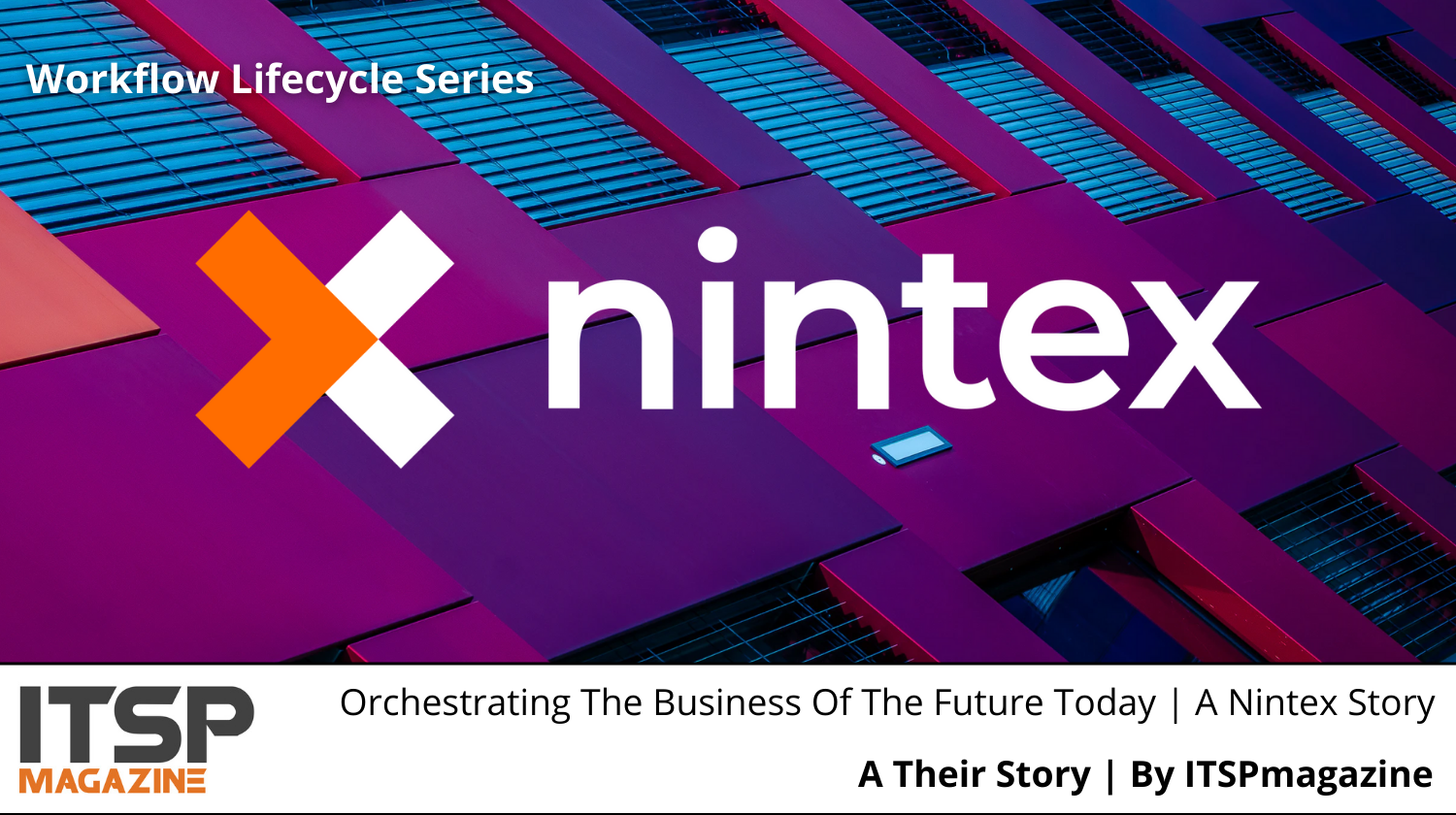A 5-part Their Story conversation podcast series with Sean Martin and Nintex experts, partners, and guests
This is a 5-part podcast series with Nintex thought leaders and solutions partners. The series will walk through the lifecycle of employing business process management (BPM) and business process automation (BPA) within the organization.
The 5 episodes include:
DEFINITION | CONSTRUCTION | EXECUTION | AUTOMATION | ORCHESTRATION
This story contains promotional content. Learn more.
Episode 1: DEFINITION
Guests:
Jesse McHargue, Technical Evangelist at Nintex (@jesse_mchargue on Twitter)
Nicole (Prestby) Vesser, Sr. Solutions Manager at Abel Solutions (@nicolevesser on Twitter)
Rhia Wieclawek, Director, Business Process Automation, Elantis Solutions Inc.
Matt Spears, Principal Consultant at Nintex
In this first episode, the group discusses the importance of properly investing in the definition phase before beginning to implement a business process, thereby ensuring the right business tasks and functions are being selected and tuned before they become targets for automation and orchestration.
Here’s a sampling of what was discussed:
What exactly is a business workflow—are there different definitions?
Who should care about having formal business processes and workflows?
Why do you need to proactively plan for and define them?
Should the goal be to automate away a pain point? Or are there other value propositions for defining a good process to begin with?
The future is coming and your business will need to keep up with the changes. There’s no better time to start on your journey to orchestrating the business of the future. That doesn’t mean you should skip any steps to get there. In fact, taking the time to evaluate what’s important could be the best process activity you could engage in at the moment to be prepared for the future.
Have a listen to this episode and then join us for the rest.
Enjoy!
Episode 2: CONSTRUCTION
Guests:
Jesse McHargue, Technical Evangelist at Nintex (@jesse_mchargue on Twitter)
Nicole (Prestby) Vesser, Sr. Solutions Manager at Abel Solutions (@nicolevesser on Twitter)
Rhia Wieclawek, Director, Business Process Automation, Elantis Solutions Inc.
Matt Spears, Principal Consultant at Nintex
In this second episode, the group discusses the importance of gathering the real business requirements driven by the end-users and the line of business owners. It's important to bring all of the key stakeholders together and to start the process with simple, easy-to-understand, pain points, and goals that you want to work toward resolving.
Here’s a sampling of what was discussed:
- Setting up your plan: definition / goals
- Scoping out the project
- Ownership of the project
- Key stakeholders and communication
- Requirements gathering and management (processes and tools)
The future is coming and your business will need to keep up with the changes. There’s no better time to start on your journey to orchestrating the business of the future. That doesn’t mean you should skip any steps to get there. In fact, taking the time to evaluate what’s important could be the best process activity you could engage in at the moment to be prepared for the future.
Have a listen to this episode and then join us for the rest.
Enjoy!
Additional Resources
Join us as we dive deeper into the world of sophisticated process automation and why a center of excellence (COE) approach is critical to your sustained success.
Episode 3: EXECUTION
Guests
Jesse McHargue, Technical Evangelist at Nintex (@jesse_mchargue on Twitter)
Nicole (Prestby) Vesser, Sr. Solutions Manager at Abel Solutions (@nicolevesser on Twitter)
Ben Stori, Low Code Lead Consultant at Solution Design Group (@benstori on Twitter)
In this third episode, the group discusses the value of taking some time to reflect on the definition and desired outcome for the business process being implemented as you begin to execute and get it into the hands of the end user.
Many found that ignoring or bypassing user acceptance training as part of the process could make things that much harder to implement. It's critical to include and leverage the users in the process to ensure they are getting a workflow that they can understand and use at each step along the way.
Of course, by opening up the process to receive user feedback means you have user feedback to take into consideration. What may have been defined as the minimum viable product (MVP), might end up not being enough to get the users to accept and adopt the process and workflow. However, there is serious danger (in terms of time and budget) that comes with digesting and incorporating feedback into the process: scope creep is real and lines need to be drawn to outline when "enough is enough" and you can call it "done."
These are just a couple of the items we dig into during this conversation. Here’s a sampling of some additional topics we touched on:
Crafting the end-to-end workflows using steps and stories
Triggers, decision-points, human interaction/intervention
Leveraging staging and production to reach workflow nirvana
Data management, data security, and change management
Visibility, logging, error handling, and reporting
All-in-all, the implementation phase can be the most challenging as this is where the rubber meets the road, so to speak. It becomes even more challenging if the earlier phases of the program were rushed or skipped. Either way, you'll find that this phase can be very dynamic and, if managed properly, can result in tremendous success for the team and the organization. However, let things creep too wide and long, and you may never find the end, let alone success.
Have a listen to this episode and be sure to join us for the rest.
Enjoy!
Episode 4: AUTOMATION
Guests
Jesse McHargue, Technical Evangelist at Nintex (@jesse_mchargue on Twitter)
Nicole (Prestby) Vesser, Sr. Solutions Manager at Abel Solutions (@nicolevesser on Twitter)
Rhia Wieclawek, Director, Business Process Automation, Elantis Solutions Inc.
Ben Stori, Low Code Lead Consultant at Solution Design Group (@benstori on Twitter)
In this fourth episode, the group looks at the role of automation in driving business value: what's worthy of automating and what are the best practices to make the most of your investments?
In the previous 3 episodes, we looked at what it takes to transition from manual, human-driven (frequently paper-bound) processes to an operating environment where tasks can be handled by applications with very little human interaction. This doesn't mean that everything can (and should be) automated. Quite the opposite is true in some cases.
When an organization has reached a phase where automation is possible, it's not just about flipping on "that switch." Actually, it should be about building out a process that eliminated unnecessary task "churn," improves efficiency, and reduces human error — but it shouldn't stop there. The goal for any automation should be rooted in how that process, when automated, can help drive business value.
The group discusses some of this as we look at some best practices surrounding processes that fit well in an automated environment.
There is always another side, and so there is in automation. Many considerations come into play when taking a digital business process to a place where it can be fully automated — some are obvious, others may not be. If assumptions are being made for how and when machines, apps, people, and data are involved, those assumptions may come back to haunt the organization later.
The natural frame of mind or way of thinking would be to automate as much as possible. And, while that may be a feasible grand vision, our group encourages organizations to stay focused on what really matters to the business.
Have a listen to get some insight that can be applied to your digital business processes now and in the future.
Learn how GM Financial has been leveraging the Nintex Process Platform since 2015 to implement digital process automation across its organization.
Episode 5: ORCHESTRATION
Guests
Jesse McHargue, Technical Evangelist at Nintex (@jesse_mchargue on Twitter)
Nicole (Prestby) Vesser, Sr. Solutions Manager at Abel Solutions (@nicolevesser on Twitter)
Rhia Wieclawek, Director, Business Process Automation, Elantis Solutions Inc.
Ben Stori, Low Code Lead Consultant at Solution Design Group (@benstori on Twitter)
In this fifth episode, the group gets into some real-world stories where multiple workflows come together in an orchestrated fashion to amplify the investments in workflow management and automation exponentially.
In the previous four episodes, we looked at what it takes to transition from manual, human-driven (frequently paper-bound) processes to an operating environment where applications can handle tasks with very little human interaction. This doesn't mean that everything can (and should be) automated. Quite the opposite is true in some cases. But, once processes have been automated, it sure is fun (and valuable) to find ways to connect them all in exciting and meaningful ways.
When an organization wants to get more out of the processes they've already automated, that's where orchestration comes into play. Picture a conductor conducting an orchestra comprised of different sections -- brass, winds, percussion. This is what automated business processes can look like -- all coming together to create a symphony of goodness in areas such as:
Systems and humans (employees)
IT and OT (medical/healthcare)
Apps, devices, and sensors (city bike rentals)
AI and Robots (manufacturing)
Customers and their experience (theme parks)
Listen to get some insight that can be applied to your digital business processes now and in the future. This is a 5-part podcast series with Nintex thought leaders and solutions partners. The series walks through the lifecycle of employing business process management (BPM) and business process automation (BPA) throughout the organization.








